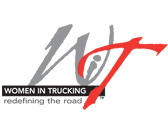 In the trucking industry, you don’t have to be a fortune teller to predict the future. As Matchmaker anticipated (and forewarned in previous newsletters), capacity has tightened and rates are climbing. Transcore Freight Solutions reported that spot market T/L rates were up 4.5% in May. The supply of drivers continues to dwindle due to demographics, health and economics. Flatbed equipment has been particularly tight, a result of a fallout from the building industry and a resurgence of the manufacturing sector, the latter enjoying a 23-month growth curve.
In the trucking industry, you don’t have to be a fortune teller to predict the future. As Matchmaker anticipated (and forewarned in previous newsletters), capacity has tightened and rates are climbing. Transcore Freight Solutions reported that spot market T/L rates were up 4.5% in May. The supply of drivers continues to dwindle due to demographics, health and economics. Flatbed equipment has been particularly tight, a result of a fallout from the building industry and a resurgence of the manufacturing sector, the latter enjoying a 23-month growth curve.
From 2001 through 2007, the auto industry peaked at 16+ million cars annually. That number dipped dramatically with the economic recession, and has now normalized at nearly 12 million cars, up 10% since last year. New home inventories stand at 174,000, the lowest since the 1960’s. However, the housing market is expected to drop another 3% in value this year, driven down by foreclosures and distressed properties. The lack of new jobs coupled with low consumer confidence indicate that a full recovery is still five years away.
And still to come–the most recent estimates predict that the CSA will eliminate 2% of the driving population. We don’t question the need for safety or the removal of unsafe drivers, but we are concerned that the lifestyle and current pay structure of our industry is not attracting enough new recruits to satisfy even a modestly growing economy.
We are anxiously awaiting the final verdict on hours of service regulations. Trucking pundits anticipate a significant drop in productivity; some say as much as 15%. This will vary with length of haul, affecting longer hauls and marginal distance hauls the most. Still many said pundits scoff at the efficacy of these changes in producing significant safety gains.
We anticipate significant driver pay increases over the next eighteen months, due to the factors cited above which will create stiff competition for the remaining drivers. This, of course, will result in higher carrier rates ultimately shouldered by the shipping public. In addition, carriers will choose loads based on their ability to maximize their time. This means that efficiency of loading, unloading, congestion and a variety of potential time drains will be carefully considered prior to load selection.
The “fortune tellers'” predictions may sound dire, but we play a role in our fate too. That’s why at Matchmaker, we train ourselves and our partners to be carrier and driver friendly. It’s in everyone’s best interests.








